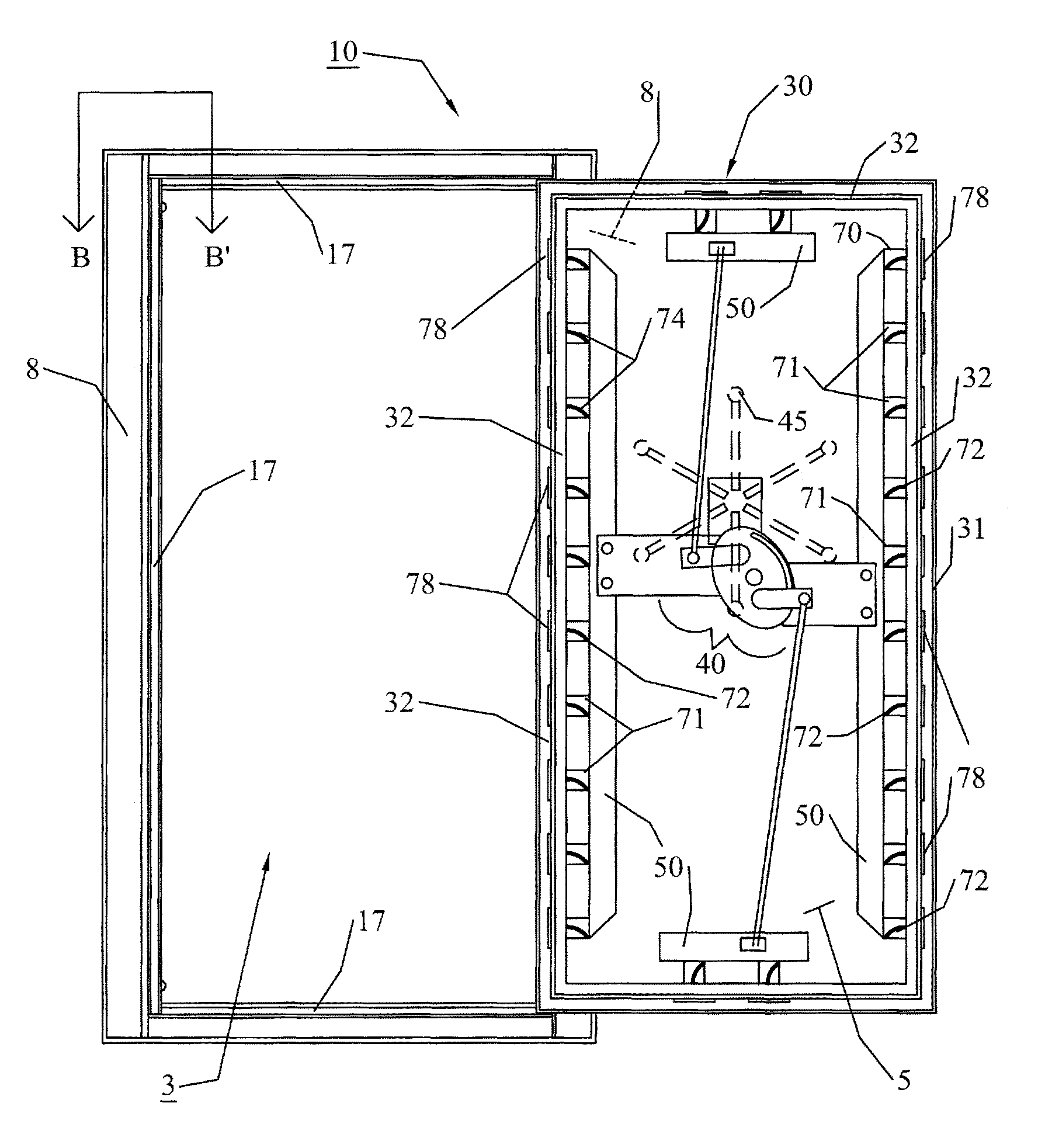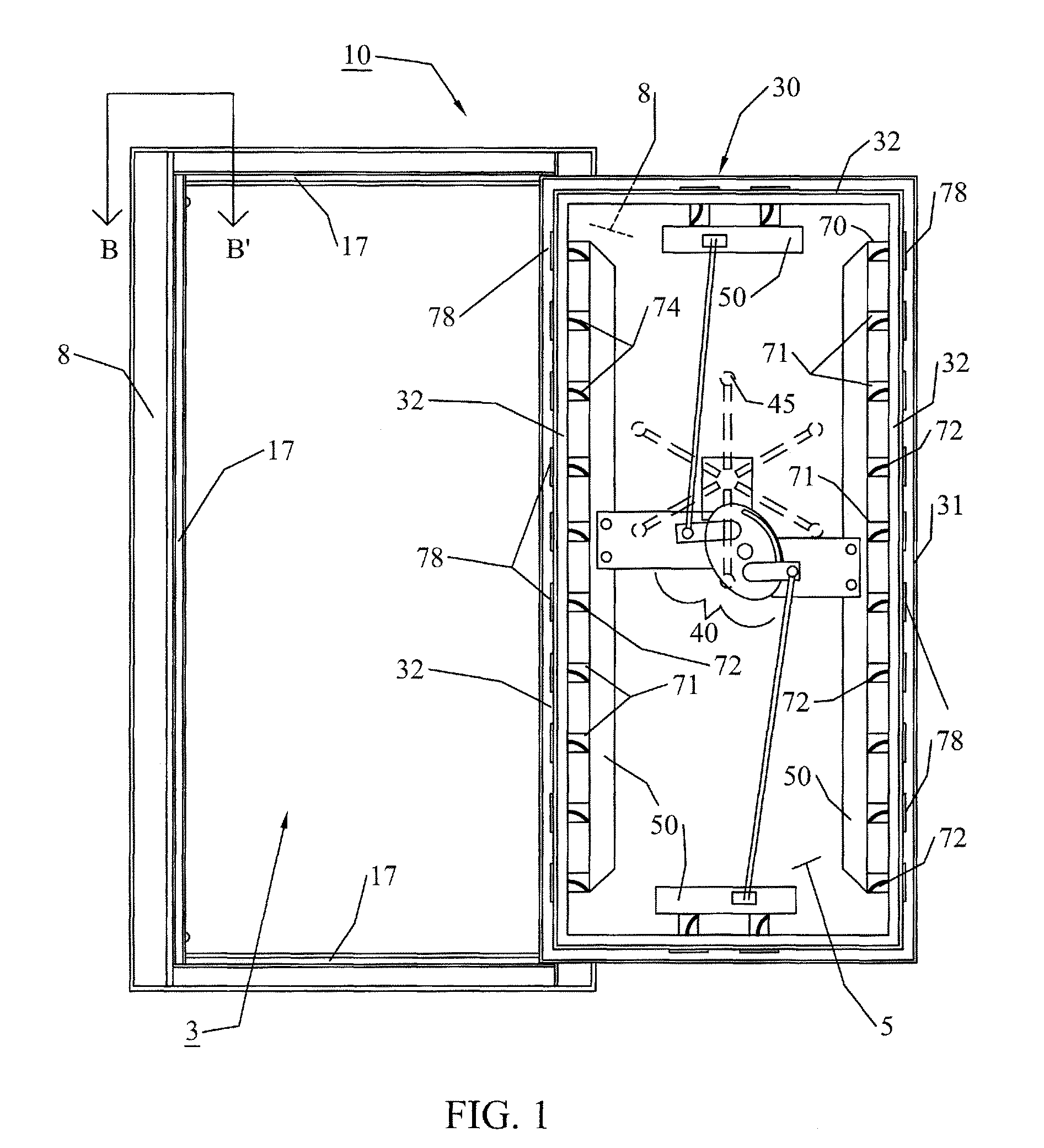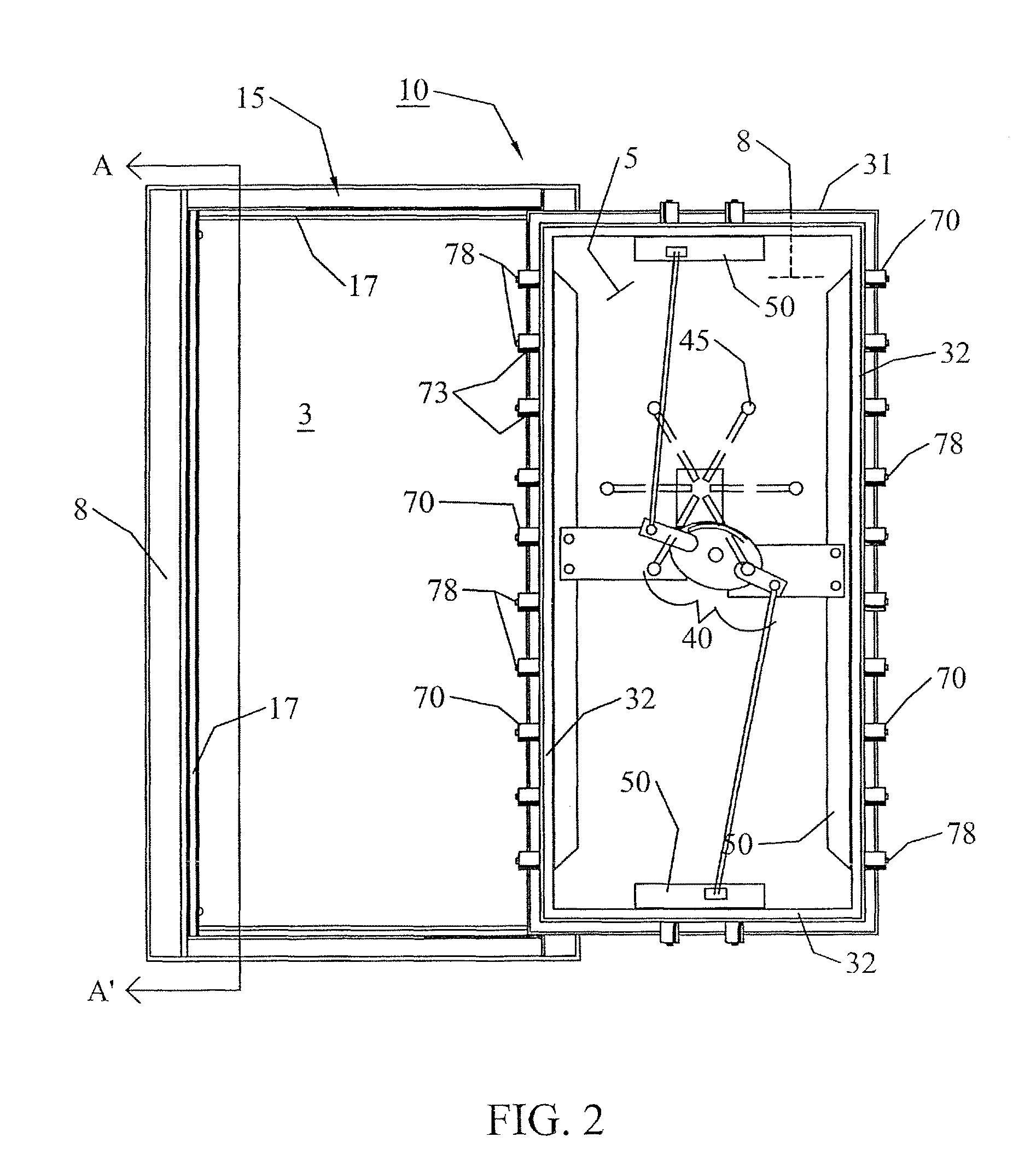Lock pin and bolt construction for securing doors and other closures
a technology of locking pins and bolts, which is applied in the direction of building locks, safes, constructions, etc., can solve the problems of no real changes or improvements to actual lock pins or methods, and achieve the effect of better securing all types of closures
- Summary
- Abstract
- Description
- Claims
- Application Information
AI Technical Summary
Benefits of technology
Problems solved by technology
Method used
Image
Examples
Embodiment Construction
[0037]The subject invention describes embodiments of a unique lock pin system that can be used with doors, lids, and other closures on rooms, containers, safes, or other devices or mechanisms that employ a lock pin or bolt to secure the position of a structure on the device or mechanism, such as, for example, the door on a safe. More specifically, the subject invention provides one or more embodiments of lock pins utilized with safes, such as residential security containers or larger commercial safes, or similar devices, where the lock pins are capable of being more securely attached to the safe body and are inhibited from being moved, damaged, or otherwise altered, so that they no longer operate to secure the door of a safe. More specifically, the embodiments of the subject invention allow at least two ends of a lock pin to be secured to inhibit bending of the lock pin or prying of the lock pin out of a position that allows it to secure the container.
[0038]The following description...
PUM
 Login to View More
Login to View More Abstract
Description
Claims
Application Information
 Login to View More
Login to View More - R&D
- Intellectual Property
- Life Sciences
- Materials
- Tech Scout
- Unparalleled Data Quality
- Higher Quality Content
- 60% Fewer Hallucinations
Browse by: Latest US Patents, China's latest patents, Technical Efficacy Thesaurus, Application Domain, Technology Topic, Popular Technical Reports.
© 2025 PatSnap. All rights reserved.Legal|Privacy policy|Modern Slavery Act Transparency Statement|Sitemap|About US| Contact US: help@patsnap.com



